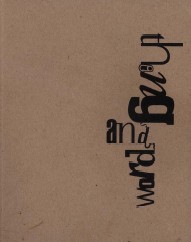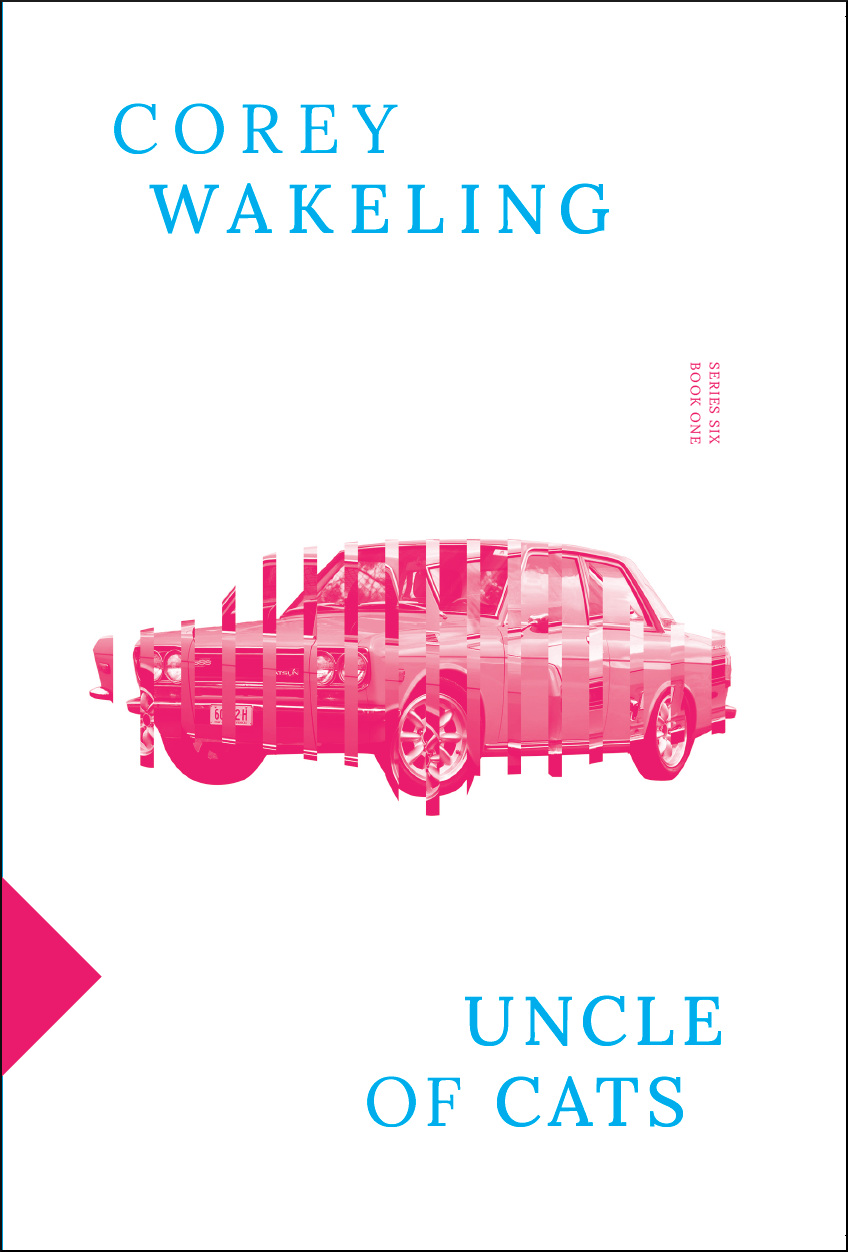The following notes, mainly concerning the materiality of poetry, were first given as the launch address for four books in Vagabond's rare object series in October 2004. The 4 books (by Dorothy Porter, John Mateer, Alison Croggon and Javant Biarujia) launched at Collected Works Bookshop in Melbourne are also referred to in James Stuart's From Text To Texture, a review of my book Words and Things and a broader discussion on visual poetry and book art in the current issue of Cordite.
 The short address at Collected Works focused on publishing poetry, or rather, the production of poetry. I expressed the opinion that Vagabond is an important independent press because it demonstrates awareness between materiality, space and content within the books it produces. Then I gave this contrary analysis in summing up much poetry publishing at present: poorly conceived books of poetry, there are many, where the content is limited by the publishing or the publishing is limited by the content, just add to a world that already has too much stuff. It's clear when a publisher, or anyone who produces things, understands the intellectual and environmental responsibility of this.
The short address at Collected Works focused on publishing poetry, or rather, the production of poetry. I expressed the opinion that Vagabond is an important independent press because it demonstrates awareness between materiality, space and content within the books it produces. Then I gave this contrary analysis in summing up much poetry publishing at present: poorly conceived books of poetry, there are many, where the content is limited by the publishing or the publishing is limited by the content, just add to a world that already has too much stuff. It's clear when a publisher, or anyone who produces things, understands the intellectual and environmental responsibility of this.
James Stuart asks the rhetorical when he questions the possibility of the graphic artist as poet, or the poet as graphic artist. As Stuart suggests, the key is collaboration. Collaboration is fundamental in interdisciplinary works of art as it is in poetry publishing. I'm sure we don't have to give up the possibilities for better books of poetry because we are limited by the aesthetic scope of one practitioner, or one form of aesthetic discourse.
I think it important to note here that the anthology Words and Things: concrete poetry / supersigns / multiple language is not a book of poetry, but an amalgam of text-based and visual practices in art and literature. If we're concerned by a large word count, let's just call it art. The point to this book was not to produce a movement or army of approach (an atomised shantytown for the rest of literature), but to offer difference of practice and approach as a major subtext.
At Collected Works I went on to say that there is plenty of room for poets to better understand the environment within which their work will be sited. Even to write to that environment, or help set up that environment in collaboration with the publisher/designer/or other. In the case of Words and Things, the ideas of the designer Ian Robertson operated at a critical level throughout the development of the book. Javant Biarujia's two books published by Monogene are also good examples of this kind of collaboration.
With far more moderation, Charles Bernstein, in his essay: The Economics of the Small Press: Poetry Publishing, writes ‘Poetry book and poetry magazine publishing rarely enters into the more radical and self-conscious domain of the book arts since there is a general preference to make books that do not call extra attention to their material and conceptual dimensions. But, nonetheless, poetry publishing is an especially important area for writers' direct involvement in the production of books'. (from Talking the Boundless Book: Art, Language, & the Book Arts, edited by Charles Alexander, Minnesota Centre for Book Arts, 1995)
A site-specific methodology is foreign to many poets, just as the mechanics of the sonnet is foreign to many artists. However, the poem always has visual and material presence as much as oral and semantic fundamentals. That's what excites me about poetry. In a similar vein Bernstein continues, ‘poetry is a medium that activates the sonic and the visual, as well as the syntactic and paratactic, dimensions of language'. Art on the other hand does not require literature or text, although it often responds to it or utilises it by choice. Art, like music, creates language less subject to governmental manipulation. Perhaps this is why art and music can afford to be less self-conscious.
John Cage, Norman O Brown and Marshall McLuhan each wrote on the militarisation of language, or language's potential to uniform minds. McLuhan even states something about the lining up of text like armies assembling across the page (such as how I'm writing presently; such as how we all write). It seems clear to me that too many poets marshal words with visual ineptness, like parents not questioning school uniforms on their children. This is especially remarkable when the spirit of poetry is by nature anarchical, albeit the practice orderly.
The thing about Cage that holds me is that far from the ‘anything goes' maxim of the sixties, his anarchical spirit and concentrated mind developed new codes for poetical operation, such as ‘a work should include its environment' (from ‘Composition in Retrospect').
The best of Cage is fundamental like a bare-footed child in mud.
Today, the environment for a poem appears not only on the page or online, but in a given site outside the book/ebook, such with the work of Ian Hamilton Finlay. Finlay, whom I acknowledge in introducing Words and Things, is another critical experimenter who founded a conceptual poetry made equally for the book, the gallery and the out-of-doors site. When a poet works with a designer, publisher, artist, typesetter, printmaker, stone mason (in Finlay's case), earthmover, or sign writer there is the potential for the poem to materialise (a shift from transformation), and keep us on our feet.














